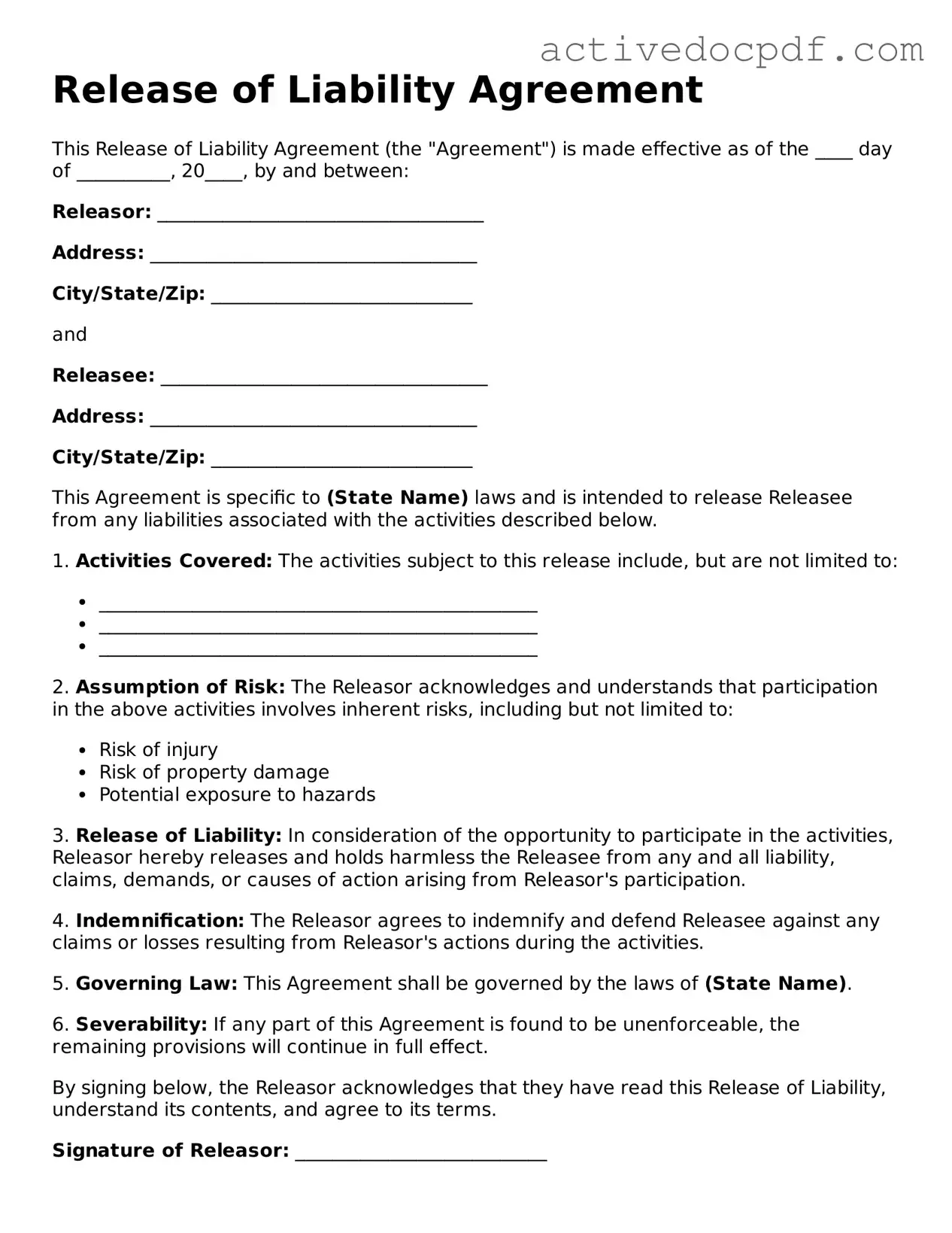A Release of Liability form is a legal document that protects an organization or individual from being held liable for injuries or damages that may occur during an activity or event. By signing this form, participants acknowledge the risks involved and agree not to hold the organizer responsible for any accidents or injuries that may happen.
Generally, anyone participating in an activity that carries a risk of injury should sign a Release of Liability form. This includes participants in sports, recreational activities, or events that involve physical risks. Parents or guardians typically sign for minors.
Yes, a properly drafted Release of Liability form is usually legally binding. However, its enforceability can depend on several factors, including state laws and whether the form was signed voluntarily and with a clear understanding of its terms.
A comprehensive Release of Liability form should include the following elements:
-
The names of the parties involved.
-
A clear description of the activity or event.
-
A statement acknowledging the risks associated with the activity.
-
A clause releasing the organizer from liability.
-
The signature of the participant and, if applicable, a parent or guardian.
No, a Release of Liability form does not protect against all claims. It typically does not cover instances of gross negligence, willful misconduct, or illegal activities. Courts may refuse to enforce a release if it is deemed unconscionable or if the risks were not clearly communicated.
A Release of Liability form is a document that participants sign to waive their right to sue, while an insurance policy provides financial protection against claims. The two serve different purposes; one limits liability, and the other offers coverage for potential claims.
The form should be signed before the participant engages in the activity. This ensures that individuals are aware of the risks and agree to the terms before taking part. It is advisable to give participants ample time to read and understand the document.
If a participant refuses to sign the form, they typically cannot participate in the activity. The organization or individual hosting the event has the right to require the form to limit their liability. It is important to communicate this policy clearly to all potential participants.
